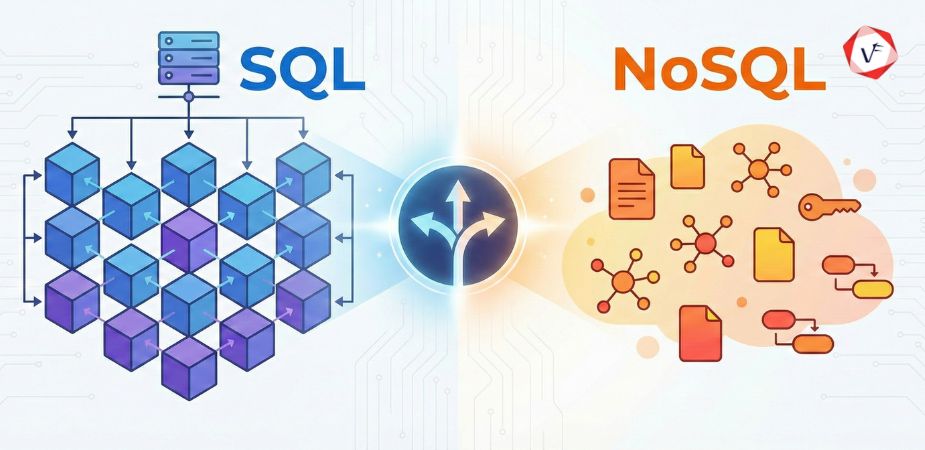- May 24, 2023 6:01 am
- by Manek
- May 24, 2023 6:01 am
- by Manek

Scalability is an important aspect of web application development that cannot be overlooked. It refers to the ability of a system or application to handle growth in traffic and data volume without compromising its performance. Scalability ensures that your web application can handle any sudden surge in traffic without crashing or becoming slow. Building a scalable web application is vital for businesses that are looking to expand their reach and handle larger user bases.
However, building scalable web applications is not an easy task. It comes with its own set of challenges that developers need to overcome to achieve the desired level of scalability. In this article, we will discuss the challenges of building scalable web applications, how to plan for scalability, implementing scalability in web applications, and best practices for building scalable web applications.
To build a scalable web application, you need to plan ahead and consider factors that could impact its scalability. Here are some factors to consider when planning for scalability:
When planning for scalability, it's essential to consider the traffic volume your application is expected to receive. Your application's design should take into account sudden surges in traffic and ensure that it can handle them without crashing or slowing down. Failing to account for traffic volume can lead to significant performance issues and ultimately hinder your application's success. Therefore, it's crucial to design your application with scalability in mind, while also keeping in mind the importance of traffic volume as a key factor.
When considering scalability, it's important to factor in the amount of data that your application needs to handle. As data volume grows, the system's complexity increases, which in turn can affect its overall performance. Therefore, it's crucial to design your application with scalability in mind to ensure that it can handle larger volumes of data without compromising its functionality or slowing down its processes.
When considering the scalability of your application, it is important to take into account the size of your user base. As the number of users grows, so does the amount of traffic and data volume, which can have an impact on the performance of your application. Ensuring that your application is designed to handle larger user bases can help mitigate any issues that may arise, and allow your application to continue functioning smoothly even as the user base expands. It is important to carefully evaluate your application's capabilities and make any necessary adjustments to ensure that it can handle the increased demands that come with a larger user base.
When planning for scalability, it's essential to consider the impact of the hardware and infrastructure on which your application runs. Scalable hardware and infrastructure should be utilized to ensure that your application can handle an increased workload as your user base and traffic volume grow. When an application's workload surpasses the capabilities of its hardware and infrastructure, it can lead to performance issues and even system crashes, causing significant losses in revenue and user trust. As a result, choosing the right infrastructure and hardware that can scale with your application's growth is crucial to ensure its continued success.
Once you have identified the factors that can affect scalability, you need to design your architecture for scalability. Here are some tips on how to design your architecture for scalability:
When designing your application for scalability, it's crucial to consider the benefits of a modular architecture. By breaking down your application into smaller, more manageable components, you can more easily scale and manage its growth over time. A modular architecture allows you to add or remove specific components without affecting the overall functionality of the application. This approach reduces the likelihood of system crashes or bottlenecks, ensuring smooth performance even during periods of high traffic or data volume. Additionally, a modular architecture can simplify debugging and maintenance, since issues can be isolated to specific components rather than the entire system.
When it comes to handling increasing traffic and workload, horizontal scaling is a preferred approach as it involves adding more servers to your infrastructure. For optimal scalability, it's important to design your application to be horizontally scalable, allowing for the seamless addition of more servers as needed to meet the increased demand. This approach can prevent your system from becoming overloaded and reduce the likelihood of outages or slow performance.
Caching is a popular technique that can significantly improve the performance of your application. By storing frequently accessed data in memory, caching reduces the number of requests sent to your servers and minimizes the processing required to serve those requests. Caching can also be used to improve scalability by reducing the load on your servers. When you cache data, your servers can quickly serve responses without needing to perform complex computations or retrieve data from a database. This allows your servers to handle a higher volume of requests, leading to improved performance and reliability.
When it comes to enhancing the reliability and performance of your application, employing a load balancer can play a crucial role. A load balancer acts as a traffic regulator, distributing incoming traffic across multiple servers, which helps avoid overloading any single server. By employing a load balancer, you can better utilize resources, reduce downtime, and ensure the smooth functioning of your application.
When it comes to scaling your application, optimizing your database is crucial. As your data volume increases, your database must be able to handle the added workload. To achieve this, consider employing database optimization techniques that can improve its efficiency and speed. These techniques can include indexing, partitioning, and compression. Indexing can help speed up the process of searching and sorting through data. By creating an index on frequently accessed columns, you can reduce the time it takes to retrieve data from the database. Partitioning is another technique that can improve database performance by dividing large tables into smaller, more manageable chunks. This can make it easier to search through the data and reduce the likelihood of database lockups. Compression is another useful technique for optimizing your database. By compressing data before storing it, you can reduce the amount of space it takes up on disk. This can help reduce the amount of time it takes to read and write data, improving overall database performance. Additionally, consider using a database that is specifically designed for scalability, such as a NoSQL database, to ensure that it can handle the increased load.
Testing is a crucial element in preparing for scalability, as it ensures that your application can handle a larger workload. Conduct thorough testing under various conditions to guarantee that your application can handle the increased load without crashing or experiencing performance issues. It is vital to test your application continuously, as changes to the codebase can affect its scalability. By incorporating testing into your development process, you can identify and resolve scalability issues early on, making it easier to scale your application as your user base and traffic volume increase.
Implementing scalability in web applications involves using various techniques and tools to ensure that your application can handle increased traffic and data volume. Here are some techniques and tools to consider:
Load balancers are an essential component of a scalable application architecture, which evenly distributes the incoming network traffic across multiple servers, thereby ensuring optimal resource utilization and reducing the risk of server overload. Load balancers come in two main types, hardware and software-based, and each has its own set of advantages and disadvantages. Regardless of the type, load balancers can greatly enhance the performance and reliability of your application by effectively managing the distribution of incoming traffic to servers, ensuring smooth operation even during sudden spikes in traffic.
When it comes to handling increased traffic, horizontal scaling can prove to be a useful technique. This involves expanding your server infrastructure to accommodate the increased load. Luckily, virtualization technologies like VMs, Docker, and Kubernetes make this process much simpler. By deploying multiple instances of your application across multiple servers, horizontal scaling ensures that your application can handle any surge in traffic. Whether it's a sudden spike in user activity or an influx of requests, horizontal scaling provides the necessary resources to keep your application running smoothly.
Vertical scaling refers to increasing the resources of a single server to handle more traffic and data volume. It can be accomplished by upgrading the hardware components of the server, such as the processor, memory, or storage. This approach can be beneficial for applications that require a lot of computational power, as it allows them to scale up on a single server rather than having to manage multiple servers. However, it can be expensive to implement and can result in downtime during the upgrade process.
Caching is a technique that can significantly improve the performance of your application. By storing frequently accessed data in memory, you can reduce the load on your servers and minimize the time it takes to retrieve information. Caching can be implemented at various levels of your application stack, including the database layer, the web server layer, and the client-side layer. By strategically caching the right data at the right layers, you can ensure that your application runs smoothly even under heavy load. However, it's important to carefully consider your caching strategy and ensure that your cache doesn't become stale or overburdened, which could ultimately impact the performance of your application.
Ensuring proper database management is critical for achieving scalability goals. To optimize your database performance, consider utilizing techniques like database sharding and partitioning. These methods allow you to distribute your data across multiple servers, thereby reducing the load on any one server and improving overall application performance. By taking these steps, you can help ensure that your database can handle increased traffic and data volume, and scale effectively as your user base expands.
CDNs are used to deliver content to users from servers located closer to them, reducing the load on your servers and improving the performance of your application.
Building scalable web applications requires following best practices that can help optimize code and reduce resource usage. Here are some best practices to consider:
Optimize your code to reduce resource usage and improve performance. This involves using best practices such as caching, minimizing database calls, and using asynchronous programming.
Microservices involve breaking down your application into smaller, more manageable components that can be developed and deployed independently. This makes it easier to scale your application.
Serverless architecture involves using cloud services to run your application without worrying about server management. This can help reduce costs and improve scalability.
Monitor and analyze the performance of your application to identify areas that need improvement. Use tools like APM (Application Performance Management) and log analysis to monitor the performance of your application.
Testing is an important aspect of building scalable web applications. Test your application under different conditions to ensure that it can handle increased traffic and data volume.
In conclusion, building a scalable web application requires careful planning, implementation of techniques and tools, and following best practices. Proper planning involves identifying factors that could impact scalability and designing your architecture accordingly. Techniques and tools like load balancers, horizontal and vertical scaling, caching, database management solutions, and CDNs can be used to implement scalability in your application. Following best practices like optimizing code, using microservices and serverless architecture, monitoring and analyzing performance, and testing your application can help ensure that your application can handle increased traffic and data volume. Building a scalable web application can help businesses expand their reach and handle larger user bases, leading to increased revenue and growth opportunities.
Guaranteed Response within One Business Day!

What is Digital Twin Technology?

What are WebAssembly (WASM) Applications?
Code Review Best Practices: Complete Guide for 2026

Database Selection Guide: SQL vs NoSQL
AI Agents in Enterprise Software: How Autonomous AI is Transforming Business Operations